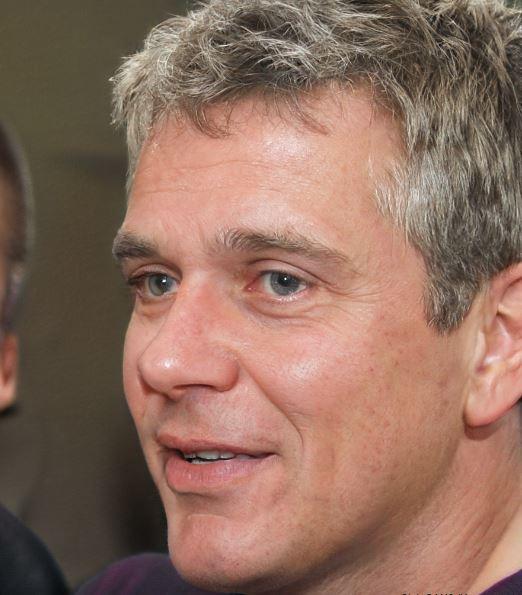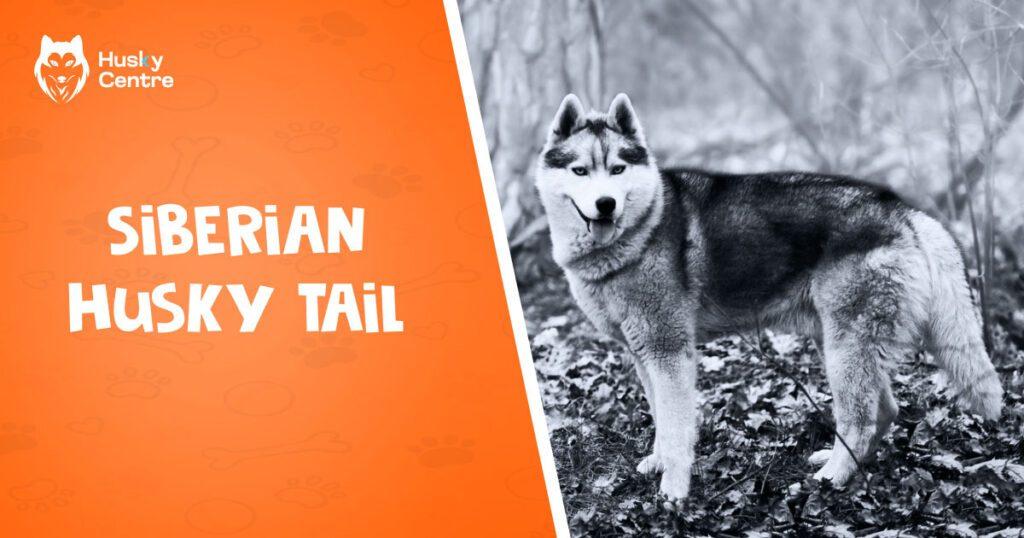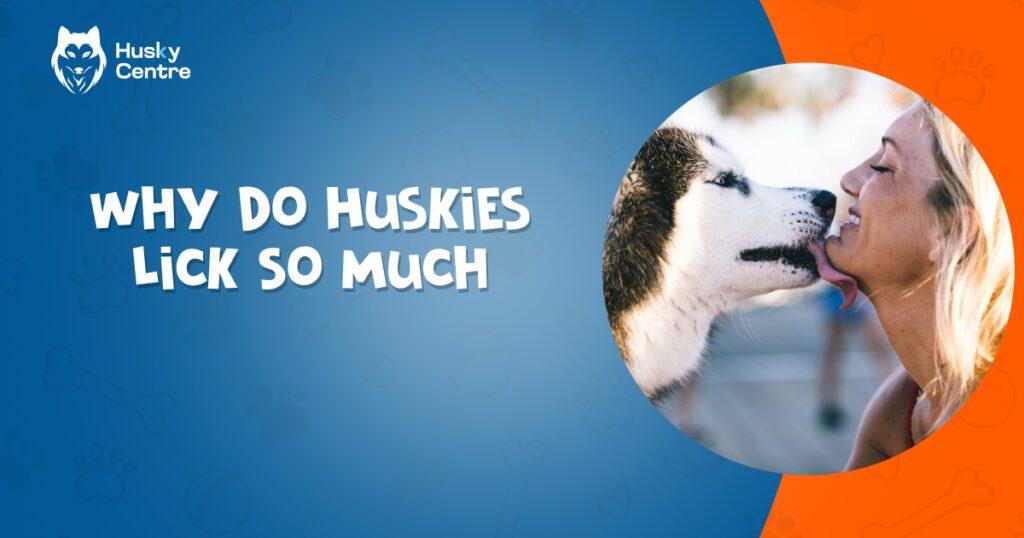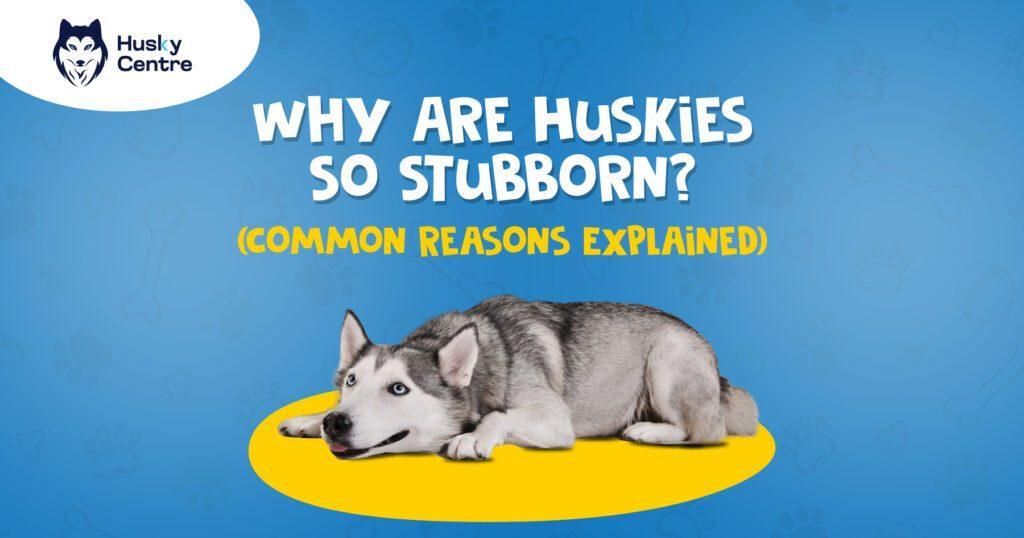A Siberian Husky’s tail is bushy and typically curls over its back. It helps with balance and warmth.
Siberian Huskies are known for their stunning appearance and striking features. One of their most distinctive traits is their tail. This tail is not only beautiful but also functional. It provides balance during movement and acts as a natural blanket in cold weather.
Huskies often curl their tails over their noses to keep warm while sleeping. This characteristic is a key aspect of their adaptability to harsh climates. Owners and enthusiasts find the Husky’s tail both charming and practical. Understanding this feature helps appreciate the breed’s unique nature and heritage.
Overview Of The Siberian Husky Breed
The Siberian Husky tail is an iconic feature of this majestic breed. Understanding the tail also means understanding the breed itself. Let’s dive into an overview of the Siberian Husky breed to fully appreciate these magnificent dogs.
The Siberian Husky is a medium-sized working dog known for its striking appearance and friendly nature. Originating from Siberia, these dogs were bred to pull sleds over long distances.
Appearance And Physical Traits
The Siberian Husky has a thick double coat that keeps it warm in cold climates. Their eyes can be blue, brown, or even one of each. They have erect triangular ears and a well-furred tail that often curls over their back.
Temperament And Personality
Huskies are known for their friendly and outgoing temperament. They are intelligent, alert, and gentle. Huskies rarely show aggression and are generally good with children.
Exercise And Activity Levels
Due to their working dog heritage, Huskies require a lot of physical exercise. They enjoy running, hiking, and playing. Lack of exercise can lead to destructive behavior.
Health And Lifespan
The Siberian Husky is a relatively healthy breed with a lifespan of 12 to 15 years. Common health issues include hip dysplasia and eye conditions. Regular vet check-ups are essential.
Training And Socialization
Huskies are intelligent but can be stubborn. Early training and socialization are crucial. Positive reinforcement methods work best with this breed.
Living Conditions
Huskies adapt well to various living conditions but prefer cold climates. They need a secure yard as they are known for being escape artists.
Grooming And Maintenance
The Siberian Husky’s coat requires regular grooming to manage shedding. Brushing once a week is usually sufficient, but more frequent grooming is needed during shedding seasons.
Diet And Nutrition
A balanced diet is vital for a Siberian Husky’s health. High-quality dog food, rich in proteins and fats, supports their active lifestyle.
Social Structure And Behavior
Huskies are pack animals and thrive in environments with social interactions. They enjoy being around other dogs and people. Isolation can lead to behavioral issues.
| Aspect | Details |
| Size | Medium |
| Weight | 35-60 pounds |
| Height | 20-24 inches |
| Life Expectancy | 12-15 years |
| Coat | Thick, double coat |
| Temperament | Friendly, outgoing, intelligent |
Importance Of Understanding Husky Tail Characteristics
The Siberian Husky is a breed known for its striking appearance and strong personality. One of the most distinctive features of this breed is its tail.
Understanding the characteristics of a Husky’s tail is important for many reasons. It helps in understanding their behavior, health, and overall well-being.
1. The Anatomy Of A Husky Tail
A Husky’s tail is thick and bushy, often referred to as a “brush tail.” The tail is usually carried in a sickle shape over the back.
This unique shape helps in regulating the dog’s body temperature. The fur on the tail is dense, providing warmth during cold weather.
2. Tail Position And Communication
Huskies use their tails to communicate. A tail held high usually indicates confidence and happiness.
A tail tucked between the legs can signal fear or submission. Observing the tail position can give insights into the dog’s emotional state.
3. Tail Health And Grooming
Maintaining a Husky’s tail health is crucial. Regular grooming helps in keeping the tail fur clean and free from mats. Check for any signs of infection or injury. Healthy tail fur should be shiny and free from tangles.
4. Tail Movement And Agility
The tail plays a role in a Husky’s balance and agility. During activities like running and jumping, the tail acts as a counterbalance. This helps in making swift and sharp movements. A healthy tail contributes to better physical performance.
| Characteristic | Description |
| Shape | Sickle-shaped, carried over the back |
| Fur | Thick, dense, bushy |
| Function | Temperature regulation, communication, balance |
Understanding these characteristics can enhance your bond with your Husky. Proper care and attention to the tail can lead to a healthier and happier dog.
Anatomy Of A Siberian Husky Tail
Siberian Huskies are known for their striking appearance, and their tails play a significant role in their unique look. Understanding the anatomy of a Siberian Husky tail is essential for dog owners and enthusiasts.
Their tails are not just beautiful but also functional, aiding in communication, balance, and warmth. Let’s delve into the fascinating details of their tails.
Physical Characteristics
The tail of a Siberian Husky is a key feature of their anatomy. It is covered in thick fur, which helps keep them warm in cold climates. Here are some key characteristics:
- Length: The tail is usually medium in length, reaching just beyond the hock.
- Shape: It has a sickle shape, curving slightly over the back when relaxed.
- Fur Density: The tail is bushy, with dense fur, providing insulation.
The table below summarizes the main physical characteristics:
| Characteristic | Description |
| Length | Medium, reaching beyond the hock |
| Shape | Sickle-shaped, curving over the back |
| Fur Density | Thick and bushy |
Tail Position And Movement
The position and movement of a Siberian Husky’s tail can tell a lot about their mood and intentions. Here are some common tail positions:
- Relaxed Position: When relaxed, the tail curves gently over the back.
- Alert Position: If the Husky is alert or excited, the tail stands up straighter.
- Tucked Tail: A tail tucked between the legs indicates fear or submission.
Huskies use their tails for communication and balance. The tail’s position changes with their emotions:
- Happy: Tail held high and wagging.
- Curious: Tail slightly raised, not wagging.
- Scared: Tail tucked tightly.
Understanding these positions helps in interpreting their behavior, ensuring better bonding and care.
Purpose And Function
The Siberian Husky is a stunning and energetic dog breed known for its striking appearance and lively personality. One of their most distinctive features is their beautiful, fluffy tail. But this tail is not just for show. It has important purposes and functions that help the Husky in its everyday life.
Communication Tool
The Husky’s tail is a vital communication tool. It helps them express their feelings and intentions. Just like other dogs, Huskies use their tails to show emotions such as happiness, fear, and curiosity. Here are some ways Huskies use their tails to communicate:
- Wagging Tail: Indicates happiness or excitement.
- Tail Tucked Between Legs: Shows fear or submission.
- Tail Held High: Demonstrates confidence and alertness.
- Slow Wagging: Suggests the dog is unsure or cautious.
By observing a Husky’s tail movements, you can understand their mood and reactions. This helps build a stronger bond between the dog and its owner. Understanding tail signals can prevent misunderstandings and ensure a harmonious relationship.
Balance And Agility
A Siberian Husky’s tail plays a significant role in maintaining their balance and agility. Huskies are known for their speed and ability to navigate tricky terrains. Their tails help them stay steady and agile. Here are some ways the tail helps with balance:
- Steering: Helps them change direction quickly while running.
- Stability: Provides balance when making sharp turns.
- Support: Aids in maintaining a stable stance on uneven surfaces.
In cold climates, Huskies often curl their tails over their noses while sleeping. This helps them retain body heat and stay warm. The tail also acts as a counterbalance during various activities. This ensures that Huskies remain agile and effective in their movements.
Understanding the purpose and function of a Husky’s tail provides insights into their behavior and physical abilities. It highlights the importance of this feature in their daily lives.
Common Tail Behaviors
The Siberian Husky is a remarkable breed known for its striking appearance and expressive tail. Understanding common tail behaviors can help owners gauge their Husky’s mood and well-being. These behaviors offer insights into their emotions and reactions to different situations.
Wagging
A wagging tail is often a sign of happiness and excitement in Siberian Huskies. When their tail wags, they are generally in a good mood. Pay attention to the speed and direction of the wagging:
- Fast wagging: Indicates intense excitement or happiness.
- Slow wagging: May show contentment or relaxed state.
- Side-to-side wagging: Usually a friendly gesture, showing a desire to interact.
Huskies may also wag their tails when they see their favorite humans or during playtime. This behavior can vary with different stimuli:
| Stimulus | Tail Wagging Response |
| Seeing owner | Fast wagging |
| Playing with toys | Moderate wagging |
| Meeting other dogs | Side-to-side wagging |
Observing these patterns helps in understanding their emotional state better.
Tucked Or Curled Tail
A tucked or curled tail often signifies fear, anxiety, or submission in Siberian Huskies. This behavior is common in situations where they feel threatened or uncomfortable. Recognizing the reasons for a tucked or curled tail can help in addressing their needs:
- New environments: Huskies may tuck their tails when introduced to unfamiliar places.
- Meeting strangers: A curled tail might occur when encountering new people or animals.
- Loud noises: Sounds like thunderstorms or fireworks can cause tail-tucking.
In some cases, a curled tail can also indicate submission. This is particularly noticeable during interactions with more dominant dogs. Monitoring these behaviors helps in providing a sense of security:
| Situation | Tail Position |
| New environment | Tucked |
| Meeting strangers | Curled |
| Loud noises | Tucked |
Understanding these cues helps in making them feel safe and comfortable.
Alertness And Tension
When a Siberian Husky’s tail is held high and appears tense, it often signifies alertness. This posture indicates their readiness to respond to potential threats or interesting stimuli. Key signs of alertness include:
- High tail position: The tail is erect and stiff.
- Focused gaze: Their eyes are directed towards the source of interest.
- Rigid body posture: Their muscles are tense, indicating readiness.
Common triggers for this behavior are:
- Unfamiliar sounds: Noises like doorbells or alarms can make them alert.
- Seeing potential prey: Small animals or moving objects can catch their attention.
- New people or animals: Meeting strangers or other pets can cause this reaction.
Recognizing these signs of alertness can help in understanding their environment better. Proper training and socialization can aid in managing their responses effectively.
Tail Care And Health
The Siberian Husky tail is not only beautiful but also serves many purposes. Proper tail care and health ensure your Husky stays happy and healthy. This section covers how to groom their tail and what health concerns to watch for.
Grooming The Tail
Grooming your Siberian Husky’s tail is essential for maintaining their overall health. Their tail is fluffy and can easily collect dirt and debris. Regular grooming helps prevent matting and keeps the tail looking its best.
Here are some tips for grooming:
- Brush the tail at least twice a week.
- Use a slicker brush to remove loose fur and tangles.
- Check for fleas and ticks during grooming sessions.
- Trim the fur around the tail base if it gets too long.
Steps for effective grooming:
- Start by brushing the fur in the direction it grows.
- Use a detangling spray if you encounter any mats.
- Check the skin for any signs of irritation or infection.
- Finish by brushing the fur to give it a smooth look.
Grooming tools you may need:
| Tool | Purpose |
| Slicker Brush | Remove loose fur and tangles |
| Detangling Spray | Ease out mats |
| Flea Comb | Check for parasites |
| Scissors | Trim excessive fur |
Health Concerns
A healthy tail is a sign of a healthy Husky. There are several health concerns to be aware of regarding their tails.
Fleas and ticks can hide in the dense fur, causing irritation and potential infections. Regular checks are essential.
Common health issues include:
- Hot spots: These are inflamed areas that can become infected.
- Flea infestations: Fleas can cause itching and discomfort.
- Ticks: Ticks can transmit diseases.
- Allergies: Allergies may cause the skin around the tail to become red and itchy.
Steps to maintain tail health:
- Check the tail for parasites during grooming.
- Keep the area clean and dry.
- Consult a vet if you notice any redness, swelling, or unusual behavior.
- Use flea and tick preventatives to keep parasites at bay.
Signs of a healthy tail:
- Shiny and smooth fur.
- No redness or swelling.
- Free from parasites.
- No signs of discomfort when touched.
Husky Tail In Different Contexts
The tail of a Siberian Husky is more than just a cute appendage. It has various functions and meanings in different contexts.
Understanding the different ways a Husky uses its tail can give you insights into its behavior and needs. Let’s explore how a Husky’s tail plays a role in social interactions and working activities.
Social Interactions
A Siberian Husky’s tail is a vital tool in social interactions. It helps the dog communicate with other dogs and humans. Here are some ways Huskies use their tails in social contexts:
- Wagging Tail: A wagging tail usually indicates happiness or excitement. When a Husky wags its tail vigorously, it is often a sign that it is happy to see you or another dog.
- Tail Held High: When a Husky holds its tail high, it is feeling confident and dominant. This posture is often seen during play or when meeting new dogs.
- Tail Tucked Between Legs: A tail tucked between the legs signifies fear or submission. This is common when a Husky feels threatened or unsure.
By observing these tail movements, you can better understand your Husky’s emotional state. This can help you respond appropriately to its needs and behaviors.
| Tail Position | Emotion |
| Wagging Tail | Happiness/Excitement |
| Tail Held High | Confidence/Dominance |
| Tail Tucked | Fear/Submission |
Working And Activities
Siberian Huskies are known for their hard-working nature and high energy levels. Their tails play a significant role in various activities and work tasks. Here’s how:
- Balance and Stability: When running or pulling sleds, Huskies use their tails for balance. The tail helps them make sharp turns and navigate rough terrain.
- Warmth: In cold climates, Huskies curl their tails around their bodies while sleeping. This helps them retain body heat and stay warm during freezing temperatures.
- Communication: During group activities, Huskies use their tails to signal to each other. This is especially important in sled teams where coordination is crucial.
Understanding these aspects can help you provide better care and training for your Husky. Engaging in activities that utilize their natural abilities can make your Husky happier and healthier.
| Activity | Tail Function |
| Running | Balance |
| Pulling Sleds | Stability |
| Sleeping in Cold | Warmth |
| Group Communication | Signaling |
Frequently Asked Questions
What Kind Of Tail Does A Siberian Husky Have?
A Siberian Husky has a bushy tail that curls over its back. This tail is often described as fox-like.
What Is The Standard Siberian Husky Tail?
A standard Siberian Husky tail is well-furred and carried in a sickle curve over the back. The tail should not curl tightly or snap flat against the back. It provides warmth and adds to their majestic appearance.
Do Siberian Huskies Have Fluffy Tails?
Yes, Siberian Huskies have fluffy tails. Their tails are bushy and often curl over their backs. This tail helps keep them warm.
Why Are Husky Tails Curled?
Husky tails curl to keep them warm. The curled tail covers their nose and face, conserving body heat. This trait evolved from their Arctic origins, providing essential protection against the cold.
Conclusion
Understanding the unique tail of the Siberian Husky enhances your appreciation of this remarkable breed. Their tails offer insight into their health, emotions, and heritage. Observing your Husky’s tail can improve communication and bonding. Always cherish these fascinating traits that make Siberian Huskies so special and beloved.


Meet Jarred, the heart and soul behind HukyCentre. With a deep affection for furry friends, he pours his passion into every word he writes. His genuine love for dogs shines through in his engaging and informative content. As a dedicated dog enthusiast, Jarred’s goal is to share valuable insights and tips that resonate with fellow dog lovers. Join Jarred on the journey as he celebrates the joy and companionship that dogs bring into our lives.



